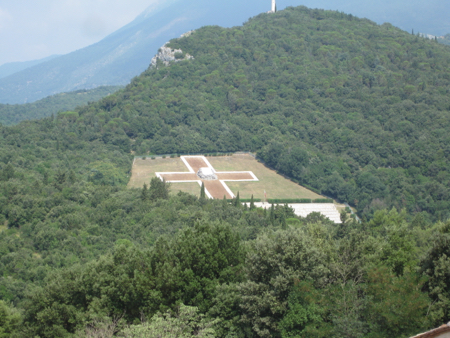
Montecassino - Polish Cemetery |
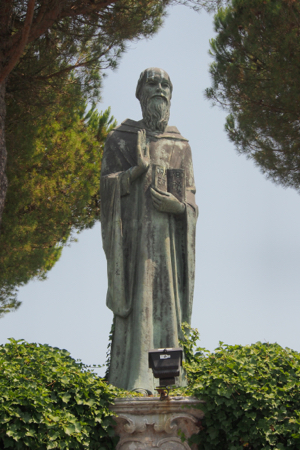
Montecassino - Statue of St. Benedict
|
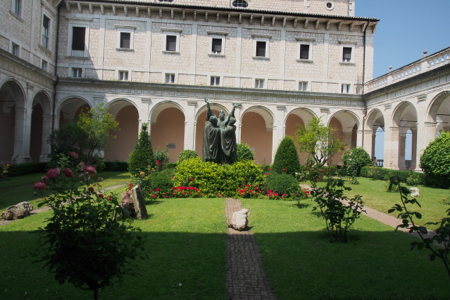
Montecassino Abbey
|
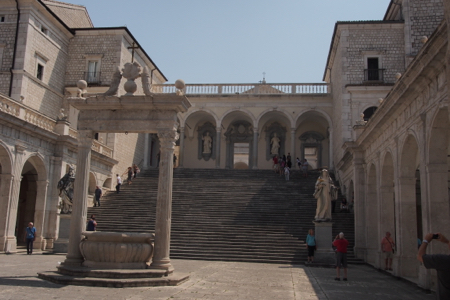
Montecassino Abbey |
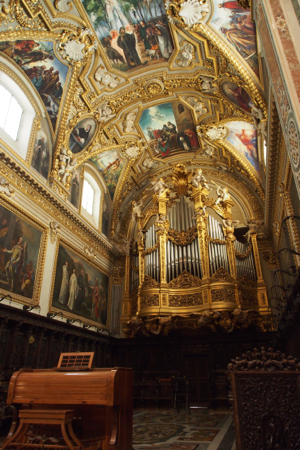
Montecassino Abbey Church
|
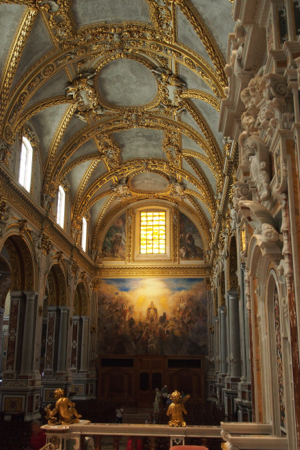
Montecassino Abbey Church |
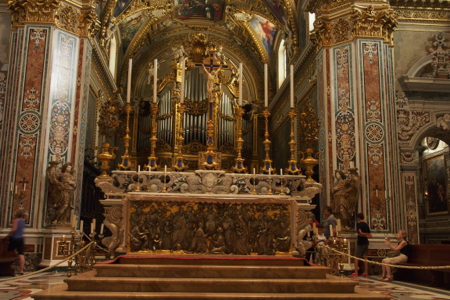
Montecassino Abbey Church |
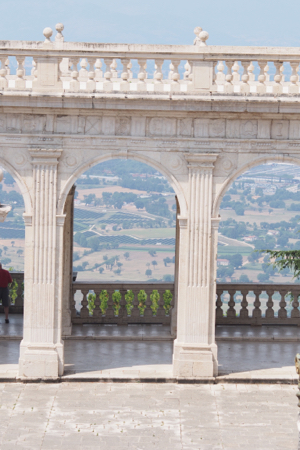
Montecassino Abbey
|
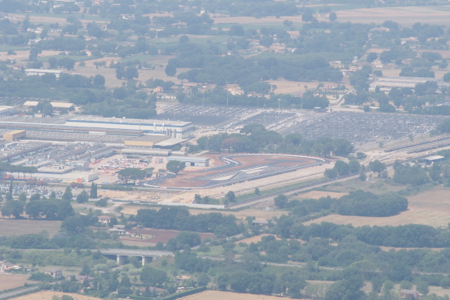
View of Alpha Romeo assembly plant and test track from Montecassino Abbey |
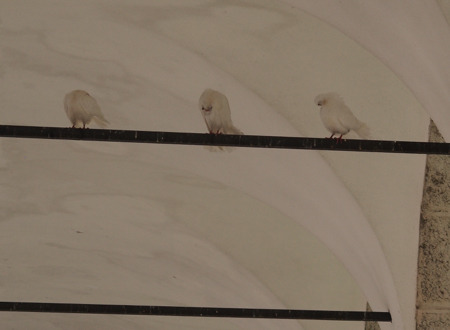
Montecassino Abbey
|
At 11:30 we stopped just off of the turnpike at Hotel Liola and Cafeteria for one hour to buy something for lunch. For 16 Euros we got two ice teas and two veggie paninis that were like quesadillas made with thin pizza dough.
On the way to the hotel Fernando took us on a quick tour of some of Rome. Traffic was much lighter now than two weeks ago when we flew into the Rome airport. The schools are out and half of the Italians take their vacation in July and the other half take it in August.
We drove parallel to the Appian Way and entered through one of the Roman gates. We drove by the huge Caracalla Bath Complex. It is a brick structure that was originally covered in marble. It provided Romans with all kinds of water therapies. We also got a good look at the following from our bus: Circus Maximus, the Mouth of Truth, the ancient hospital on an island in the Tiber River, St. Angels Castle where the pope could enter underground from the Vatican if the Vatican was attacked, Vatican City, some of the 1,000 churches in Rome, the huge Memorial to Unknown Soldiers commonly referred to as an Olivetti typewriter but an elaborate marble structure just the same, the Italian president’s residence, the corner with four fountains, the copy of Michelangelo’s Moses, Republic Plaza with St. Maria Angeli Basilica once a Roman temple, and the planetarium. Last, we looked at the US Embassy and then the Villa Borghese gardens and park.
We checked in to the Albani Hotel and are again on the sixth floor overlooking the monastery garden. This time our room has a lime green carpet, pink and blue walls, and the bathroom is blue and orange with a lavender floor. We watched some of the Tour de France and Wimbledon on Italian TV.
We had snacks and wine before dinner in our hotel bar and then had a group photo taken on the lobby steps. We had dinner downstairs in the hotel restaurant with vegetable lasagna, chicken breast and potatoes, and lemon sorbet. At the end we said our goodbyes to those flying back to the US in the morning.
|
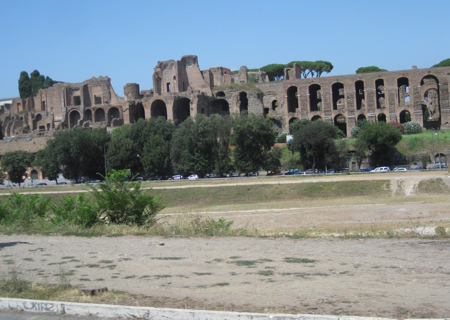
Caracalla Baths |
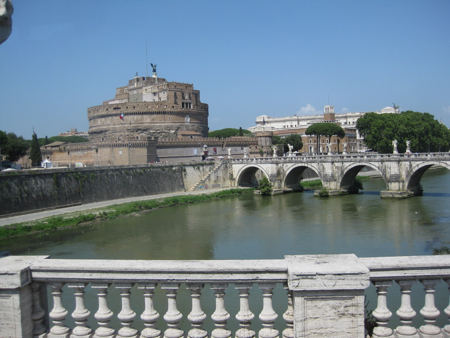
Tiber River
|

Vatican - St. Peter’s Square
|
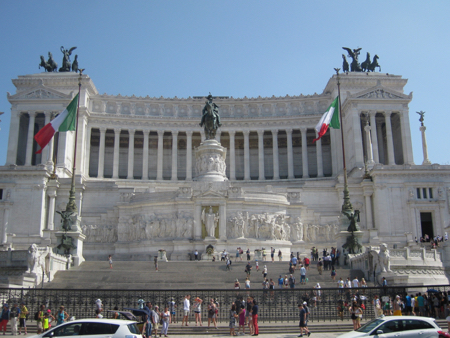
Victor Emmanuel II Monument and Tomb of the Unknown Soldier |
Fri, 7/10/15 – Rome – Begin Post-Trip Extension
At 9 AM we met our Grand Circle tour guide for our four days in Rome. Her name is Giorgia and she is very good. Giorgia told us that Rome does not have many WCs so as we travel “pee before we leave” and use cafe toilets as needed. If one person buys a coffee the rest of the group can use the toilet – that is the local custom.
She explained that the way to find the best gelato (ice cream) is to look at the pistachio flavor. It should be tan in color. If it is bright or faded green, then they use powders and chemicals in their gelatos. Also, Italians always ask for at least two flavors even in a small cup or cone. Only Americans ask for one flavor.
She explained several more things before we headed out for a walk and a public bus ride. We walked along Po Street down to the Coppede Parioli. It is the ritzy neighborhood adjacent to ours with housing for city council and employees when the capital was moved to Rome in 1923. The arch we passed under at the entrance commemorates Roman gods, the Medici family, and the Virgin Mary. Most of these buildings are now condos but so expensive some are now doctor’s or lawyer’s offices.
|
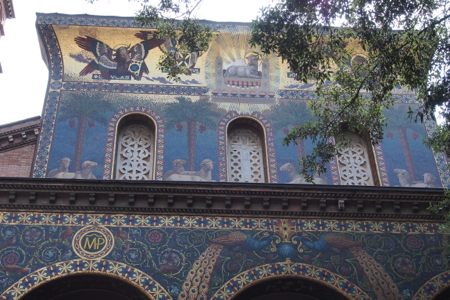
Coppede Parioli Neighborhood |
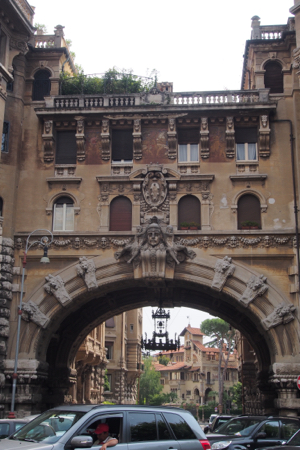
Coppede Parioli Neighborhood
|
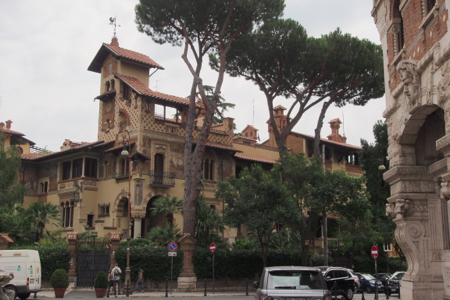
Coppede Parioli Neighborhood
|
We all squeezed onto a #63 bus and got off near the Pantheon. First we went into the Church of St. Ignatius. It has a flat ceiling painted by Pozzo (1691-94) so that it looks like an arched vault and a dome. It is very cleverly done.
|
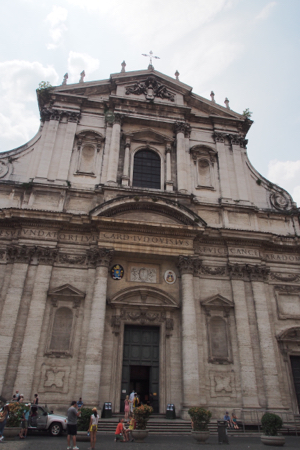
Church of St. Ignatius |
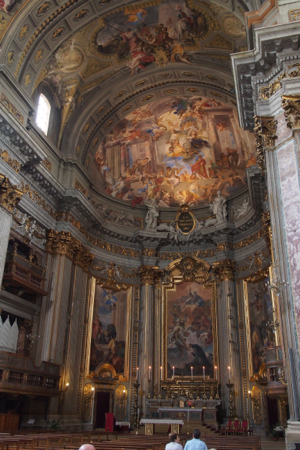
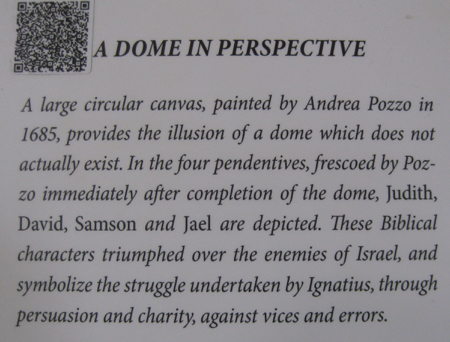
|
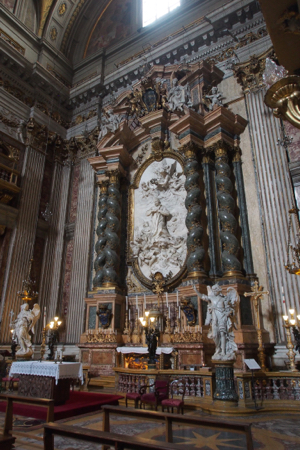
Church of St. Ignatius
|
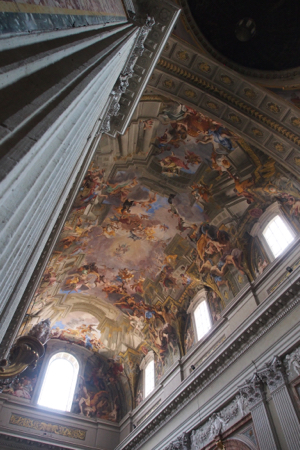
Church of St. Ignatius |
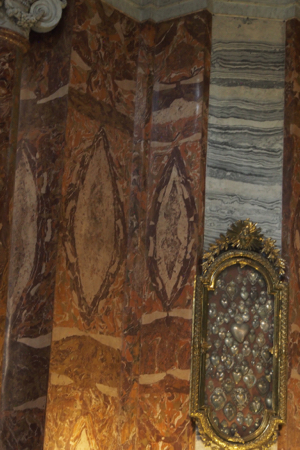
Church of St. Ignatius
|
Giorgia introduced us to another Italian specialty – Morrochino coffee. It is espresso, bitter dark chocolate, and a dab of milk in a demitasse cup. We tried one at Tazza D’oro Caffe (and could use their toilet) and found it delicious. The bitter flavor lasted on our tongues for a long time.
We then went to the Pantheon to marvel at the dome. The Pantheon was built in the 1st c. AD, hence the 13 Roman gods, and was made into a Catholic Church in the 4th c. It contains the tombs of the kings and queens of Italy, and of Raphael. In 126 AD Apollodorus designed and built the huge dome (142 feet in diameter) by making the dome walls 21 feet thick at the base and reducing to 4 feet at the top. The stones at the base were also heavier and stronger than those at the top. At the peak is a compression ring around an oculus (opening) that acts as a 3-D keystone. It is the same clever design later used in Hagia Sophia in Istanbul.
|
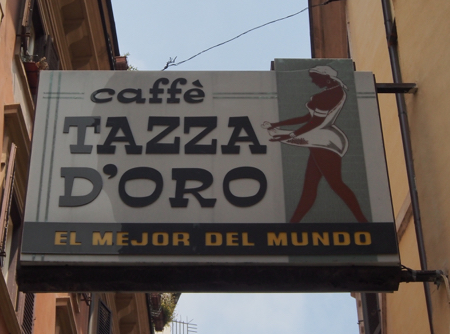
Tazza D’oro Caffe |
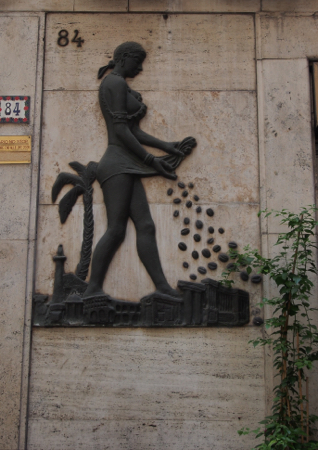
Tazza D’oro Caffe
|
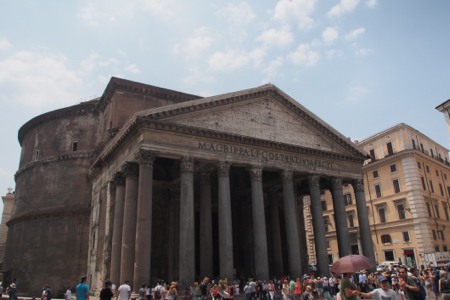
Pantheon
|

Pantheon |
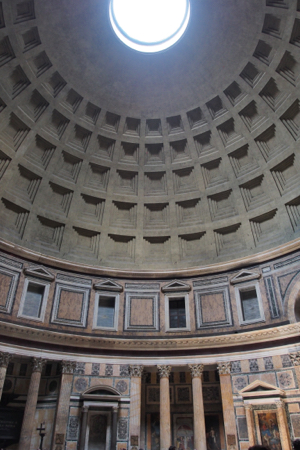
Pantheon
|
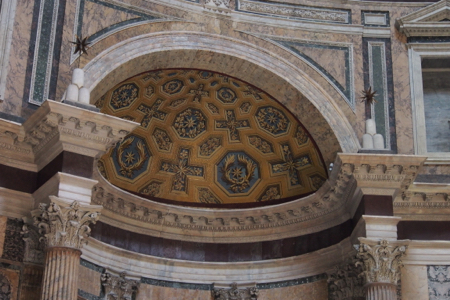
Pantheon |
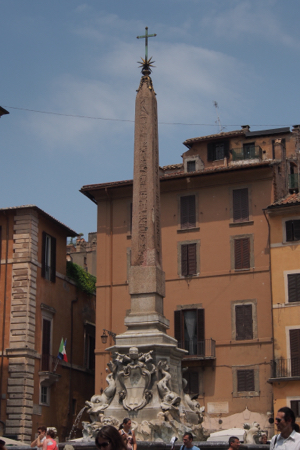
Obelisk in front of the Pantheon
|
We walked to Piazza Navona. In the rectangular square are three fountains. The middle one is Bernini’s Four Rivers Fountain representing the water flowing on four continents known at the time: Nile, Danube, Ganges, and Rio De La Plata.
We walked through a street market with flowers, vegetables, clothes, and leather goods and planned to take the #63 bus back to the hotel. The bus did not come so Giorgia put us in a cab. It cost 14.60 Euros to get home. The public transit in Rome runs on a “when I feel like it” schedule.
|
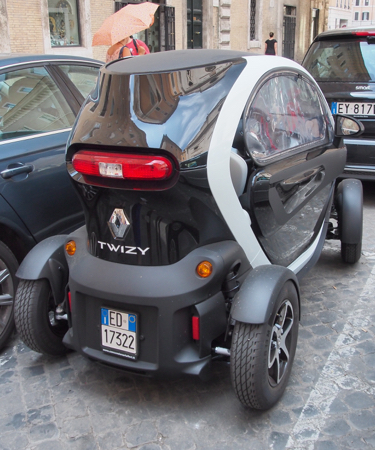
Cute car - easy to park
|
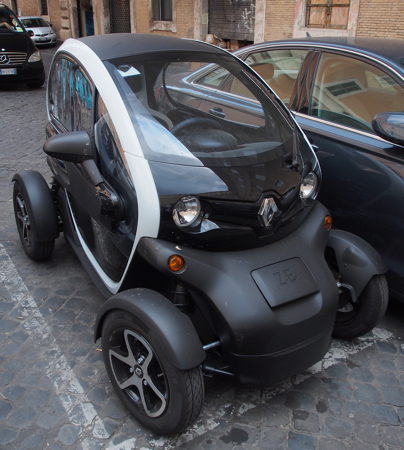
Cute car - easy to park |
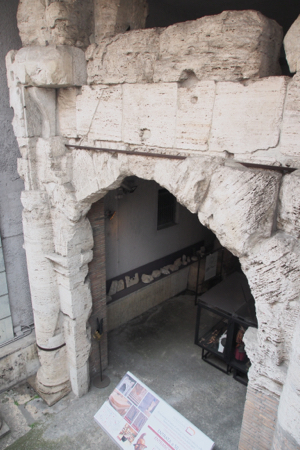
Ancient ruins
|
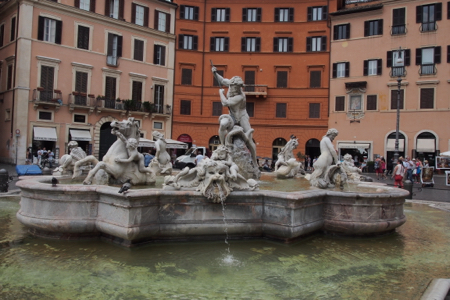
Fountain of Neptune |
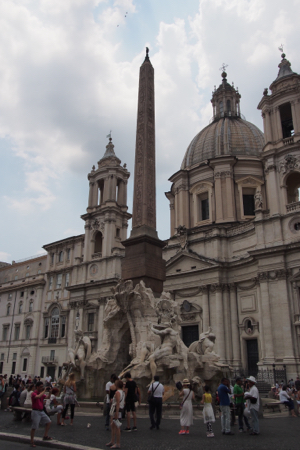
Bernini’s Fountain of the Four Rivers
|
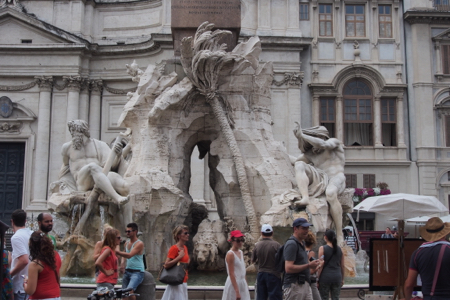
Bernini’s Fountain of the Four Rivers |
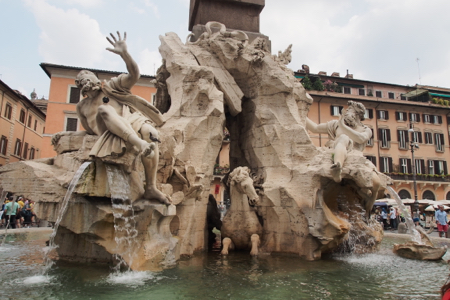
Bernini’s Fountain of the Four Rivers |
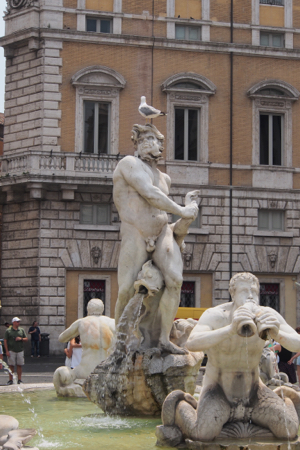
Fontana del Moro
|
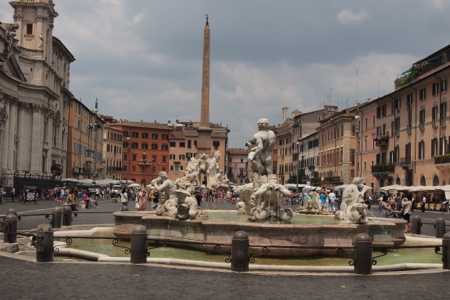
Fontana del Moro
|
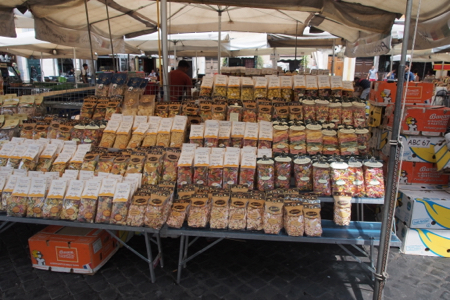
Street market |
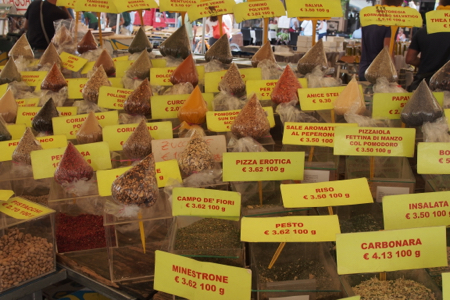
Street market
|
We ate dinner on our own at a local pizzeria, Al Simeto Restaurant and had spaghetti with clams and raviolis. Six others of our group wandered into the same restaurant.
|








































